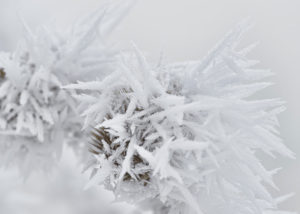Winter can be a tough time for trees. Not only do they have to deal with the cold, but they can also suffer from various types of damage. In this post, we will discuss some of the most common types of tree damage that occur during winter. We will also provide tips on how to prevent this damage from happening. So if you want to keep your trees healthy and looking good, read on!
Common Forms Of Winter Tree Damage

Freezing
The most common form of winter tree damage is freezing. When temperatures drop below freezing, the water inside a tree’s cells can freeze, damaging the cell walls and causing them to become brittle and break apart. This can lead to a loss in sap flow and weakened branches. To prevent this from happening, it’s important to ensure that your trees are properly hydrated throughout the colder months. Providing adequate irrigation during fall will help protect against frozen cells in wintertime.
Drought Stress or Desiccation
Another form of winter damage is called desiccation or drought stress. Trees need water all year round, not just during summertime. During cold weather when there isn’t much precipitation, trees can suffer from a lack of hydration due to their roots not being able to absorb water. This can cause the leaves and branches to become dehydrated, leading to a weakened tree structure and poor growth. To avoid this type of damage, make sure your trees are provided with enough water during winter months.
Ice Storms
Finally, another form of winter tree damage is caused by ice storms. When an ice storm occurs, it accumulates on the branches and leaves of the tree and can cause them to break apart due to their weight. In order to protect against this kind of damage, you should prune your trees in late fall or early winter before temperatures drop too low for ice storms to occur. Pruning will help reduce the amount of surface area that’s exposed to freezing temperatures and heavy snow or ice build-up.
These are just some of the most common types of winter tree damage. By following the tips we’ve provided, you can help prevent these issues from occurring and keep your trees healthy throughout the cold weather months. Remember to always water them regularly, prune them in late fall or early winter, and look out for any signs of stress or damage that might occur during wintertime. With a little bit of maintenance and care, your trees will stay in great condition all year round!


